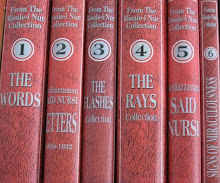
Picture's source:
http://www.stanford.edu/Characteristic of CNSProtected by cranium, meningis + csf
CSF -secreted by choroid plexuses (special capillaries in ventricles of the brain → form BBB)
-act as shock absorbing medium
Brain stem-midbrain
-pons → resp. center
-medulla → resp. center, cardiac center (coordinating reflex for vomiting, swallowing, coughing, sneezing)
-cerebellum → required for smooth coordinated movement + equilibrium
Blood brain barrier (BBB)-Composed of
endothelial cells packed tightly together to form
tight junction that prevent passage of most molecules.
-An underlying basement membrane and specialized glial cells (astrocyte), which projects processes (
pedicles) that attach to the walls of the capillary, reinforce this barrier.
-Very few substances can cross the BBB into brain tissue:
(1)
Water is able to freely diffuse
(2)
Glucose (the primary energy source of the brain) and amino acid require carrier-mediated transport
(3)
Nonpolar lipid soluble substances can cross more readily than polar water-soluble ones
(4)Other active
transport systems are present to pump weak organic acids, halides and extracellular K+ across the BBB
The blood – CSF barrier-Cerebrospinal fluid (CSF) is clear, colorless fluid that normally contains none or few cells, a small amount of protein, and a moderate amount of glucose
-The blood – CSF barrier is composed of epithelial cells of the choroid plexus – a highly vascular structure, located within the ventricles .
Function of NSDetect changes in internal and external environmental (in + outside the body)
via sense organs (receptors)
↓ (information sent to CNS by sensory nerve/afferent nerve)
CNS (brain/spinal cord) – intergrating center
↓ (analyse the sensory information via motor nerve/efferent nerve – send instruction to)
Muscle/gland
*Receptor (a) special receptor
- hearing
- smell
- taste
- chemoreceptor
- osmoreceptor
(b) general receptor
- pain
- temperature
- proprioreceptor

